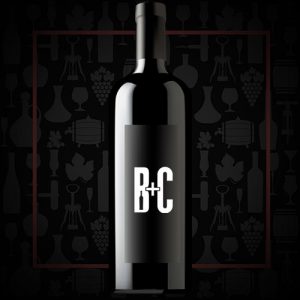Cellar Profile
The vineyards of family-owned Jordan River Wines are located on the Mafraq Plateau, on a mountain 80 km north of Amman. This is a holy site to the Abrahamic religions and the World Heritage site of Umm El-Jimal. The iron-rich, organically-poor soil sits upon a massive basalt slab that makes the vines work feverishly to reach the water table. Jordan is ranked as the 3rd most water poor country on earth and the region receives scant rainfall during the dry summers. However, the adjacent Massive Jabal Al-Arab glacier feeds glacial melt into 400-metre-deep aquifers that sustain the vineyards. 330 sunny days per year, on average, allow for full phenolic ripeness in the skins. These grapes are grown at elevation (almost 3000ft), with huge diurnal temperature shifts that impart freshness and acidity in the wines produced. Over 45 different Italian, French and Spanish varieties are planted.
Region
Located on a remarkable landscape atop the Mafraq Plateau, at an altitude of 840 meters. At some point in antiquity, an extinct volcano (Jabal-Al-Arab) poured out fields of basaltic lava over the Mountain Heights Plateau, an area that is Jordan’s most fertile region. The Jordanian climate, with over 330 sunny days yearly, coupled with dry summers and constant breezes, is ideal for grapes and vines. Vast diurnal shifts between day and nighttime temperatures allow the vines to rest, which enhances the characteristics and retains balance of the varieties.
Vineyard
Over 40 types of world-renowned vines, of the best quality, thrive in the mineral rich volcanic soil of the Basalt Desert. Not knowing what works in Jordan, all forty are growing in this ideal mixture, ultimately producing elegant wines. The rain and melting snow, flowing off the 1800m-high Jabal Al-Arab, travels under the volcanic desert surface and accumulates in 400-meters deep aquifers. This water is brought to the surface and used to supply the 120 hectares of ‘dry-farmed’ vineyards.
Varieties
Cabernet Sauvignon is probably the most famous red wine grape variety on earth and has successfully spread to almost every wine growing country. DNA profiling carried out in California in 1997 confirmed that Cabernet Sauvignon is the product of a natural genetic crossing between key Bordeaux grape varieties Cabernet Franc and Sauvignon Blanc. There are two key reasons for Cabernet Sauvignon’s rise to dominance. The most simple and primordial of these is that its vines are highly adaptable to different soil types and climates; it is grown at latitudes as disparate as 50°N (Okanagan Valley, Canada) and 20°S (northern Argentina), and in soils as different as the gravels of Pessac-Leognan and the iron-rich terra rossa of Coonawarra. Secondary to this, but just as important, is that despite the diversity of terroirs in which the vine is grown, Cabernet Sauvignon wines retain an inimitable “Cab” character, nuanced with hints of provenance in the best-made examples. Cabernet Sauvignon wines always seem to demonstrate a handful of common character traits: deep color, good tannin structure, moderate acidity and aromas of blackcurrant, tomato leaf, dark spices and cedarwood.
Winemaking
Hand-harvested fruit is brought directly to the winery in small containers to ensure a clean ferment. The grapes are sorted and de-stemmed before being crushed into open-top fermenters for maceration and a long ferment using selected yeasts. The wine is then transferred into French oak barriques for a year of aging before being bottled unfined and unfiltered.
Tasting Notes
A big, chewy Cabernet. Dark berries, anise, mocha and a touch of garrigue on the nose. The palate is medium- to full-bodied with some serious tannic grip. These grapes are grown at elevation, where cool nights help retain freshening acids. This is a wine for the long term, but enjoyable now with a vigorous decant and some air. Serve with lamb stew or a good, marbled steak.

 info@buyersandcellars.ca
www.buyersandcellars.ca
info@buyersandcellars.ca
www.buyersandcellars.ca